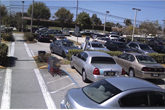What is going on in the minds of your customers right now? What worries them? Keeps them up at night?
A just published report from Allied Universal looked at the security landscape as reported by large global companies. Commissioned by Allied Universal and its international business, G4S, the World Security Report documents opinions of 1,775 chief security officers from 30 countries. According the report, these companies lost a combined $1 trillion in revenue in 2022 due to physical security incidents — a quarter of the word’s GDP.
Going forward, CSO’s cite economic unrest, social unrest, climate change, fraud and theft as the things most likely to impact security efforts in the next 12 months. As a result, physical security budgets are predicted to increase significantly as security leaders focus on investing in advanced technology, skills and training.
“We commissioned this report for the benefit of the entire industry and the companies we protect,” said Steve Jones, Allied Universal’s global chairman and CEO. “It comes at a time when organizations across the globe are increasingly navigating more complex security hazards and threats. The research shows the impact of security threats on organizations is multidimensional — from the disruption of productivity to the loss of customers, to the potentially staggering financial impact.”
One quarter of the companies reported a drop in corporate value following an external or internal security incident in the past year.
“Global businesses are facing increased security threats; a tight labor market globally; and rapidly changing technology that presents new risks and requires different skills said Ashley Almanza, executive chairman of G4S, Allied Universal’s international business. “In addition, executive boards are grappling with balancing physical and cybersecurity alongside other priorities.”
Some of the key findings from the World Security Report include:
- Leaking of sensitive information is expected to be the biggest internal threat in the next 12 months according to 36 percent of respondents.
- Fraud is expected to be the biggest external threat in the next year, predicted by 25 percent of CSOs.
- Security budgets represented approximately $660 billion (3.3 percent) of global revenue at respondent companies in 2022.
- Physical security budgets at 46 percent of respondent companies are set to significantly increase in the next 12 months.
- Artificial intelligence (AI) is top of the agenda for future physical security technology investment, with 42 percent intending to invest in AI and AI-powered surveillance over the next five years.
- Cyber threats that threaten physical security systems are challenging to operations according to nine out of 10 respondents.
- CSOs reported a disconnect between physical security incidents and the importance placed on them at board level; nine in 10 CSOs said company leaders are more concerned about cyber than physical security.
- Eight in 10 (84 percent) said recruitment of security professionals will be challenging over the next five years.
For more on the AI agenda mentioned above, check out the recent survey from Eagle Eye Networks, which includes a snapshot of how AI is being leveraged in cloud video, specifically regarding license plate recognition. For example, security cameras use AI to detect vehicles 72 percent of the time in the Americas, compared to 57 percent of the time in Europe. Whereas security cameras in Europe use AI to detect people 37 percent of the time, compared to 24 percent of the time in the Americas.
“AI will have a tremendous impact on the use of video surveillance in the coming years,” said Dean Drako, founder and CEO of Eagle Eye Networks. “This report is intended to provide real data and trends analysis for organizations that are investing in a new or upgraded cloud video surveillance system.”
Another recent study by NSCA found that nonresidential construction is predicted to rise 5 percent or more in several vertical markets, including corporate, education, government, healthcare, lodging, manufacturing and retail.
The organization’s updated Electronic Systems outlook report for summer 2023 includes the new construction outlook for the U.S. and Canada based on data from Q1 and Q2 of 2023 as well as a forecast for the remainder of 2023 and 2024.
Overall, total U.S. engineering and new construction spending is forecast to end 2023 up 3 percent compared to up 11 percent in 2022. Spending in reported target nonresidential building segments is forecast to end 2023 up 15 percent from 2022, compared to up 13 percent between 2022 and 2021.
“Strong, double-digit investment growth in target building segments, including lodging, manufacturing, and retail, could drive increased spending through 2023,” said NSCA Executive Director Tom LeBlanc. “For the first time in many years, no targeted segments are predicted to have a ‘down’ year. Instead, nearly all are expected to realize investment growth exceeding 4 percent, which outpaces historical rates of inflation by year-end.”
All of this is food for thought and discussion with end user customers in the coming months.






